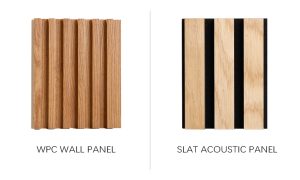
A carpet tack strip, also known as a gripper rod or gripper strip, is a narrow strip of wood or metal with small, sharp nails or tacks protruding upward. It is used in the installation of wall-to-wall carpeting. The tack strip is typically attached around the perimeter of a room, near the walls, with the pointed tacks facing towards the center of the room.
Here’s how carpet tack strips are used in the carpet installation process:
- Preparation: Before installing the carpet tack strip, the floor should be clean, dry, and free of debris. Subfloors, such as wood or concrete, are common surfaces for installing the tack strip.
- Placement: The tack strip is placed around the edges of the room, leaving a small gap between the strip and the wall. The pointed tacks should be facing towards the center of the room.
- Securing the Strips: The tack strip is secured to the subfloor using nails, screws, or adhesive, depending on the type of subfloor and the specific tack strip design.
- Stretching the Carpet: Once the tack strip is in place, the carpet is stretched over the room, and its edges are pressed down onto the tack strip. The sharp tacks on the strip grip the carpet backing, holding it securely in place.
- Trimming Excess: After the carpet is attached to the tack strip, excess carpet material is trimmed along the edges of the room.
The purpose of the carpet tack strip is to provide a secure anchor for the carpet, preventing it from shifting or coming loose over time. The strips are positioned in such a way that the carpet can be stretched tightly across the room, creating a smooth and taut surface.
It’s important to handle carpet tack strips with care, as the exposed tacks can be sharp and cause injury. During the carpet installation process, professionals typically wear protective gloves and take precautions to avoid accidents.

Carpet tack strips come in various specifications to suit different carpeting needs and installation scenarios. Here are some common specifications and considerations:
- Material:
- Wood: Tack strips are often made of wood, which can be pine, plywood, or another hardwood. Wood tack strips are suitable for use on wooden subfloors.
- Metal: Some tack strips are made of metal, providing durability and resistance to moisture. Metal tack strips are suitable for concrete or other types of subfloors.
- Length and Width:
- Tack strips come in different lengths and widths to accommodate various room sizes and carpet thicknesses. Standard lengths are typically around 4 feet (1.2 meters), but longer strips may be used for larger rooms.
- Point Type:
- Tack strips have various point types, including standard, serrated, and pinless. The type of point can affect how well the carpet grips onto the strip.
- Density of Tacks:
- The number of tacks per linear foot can vary. A higher density of tacks can provide better grip and stability for the carpet.
- Adhesive Backing:
- Some tack strips come with adhesive backing, allowing for easier installation on certain types of subfloors. The adhesive helps secure the strip in place before attaching it with nails or screws.
- Installation Method:
- Tack strips can be designed for either concrete or wood subfloors. Some are versatile and suitable for both.
- Environmental Considerations:
- Manufacturers may offer environmentally friendly options, such as tack strips made from recycled materials or using eco-friendly adhesives.
- Compliance with Standards:
- Tack strips should meet industry standards and regulations for safety and quality. Checking for compliance with relevant standards is essential.
It’s important to consult with the manufacturer’s specifications and guidelines for the specific tack strip you are using to ensure proper installation and performance. Additionally, professional carpet installers may have preferences based on their experience with different brands or types of tack strips.






